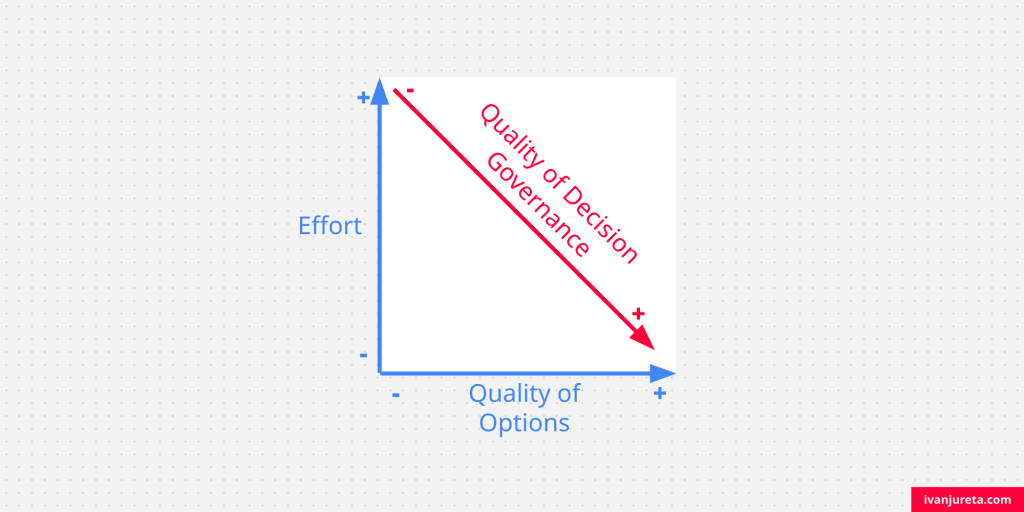Are Easy Options the Likely Choice?
How many options will be identified when a decision needs to be made? How much thought will go into developing a robust rationale for each option? Doing both of these takes effort. Unless there are incentives to invest effort, a decision will be made from one or few low quality options. That is a simple and useful heuristic for predicting the variety and quality of options that will be identified in a decision situation.
This text is part of the series on decision governance. Decision Governance is concerned with how to improve the quality of decisions by changing the context, process, data, and tools (including AI) used to make decisions. Understanding decision governance empowers decision makers and decision stakeholders to improve how they make decisions with others. Start with “What is Decision Governance?” and find all texts on decision governance here.
The same heuristic means that when decision governance is absent or weak, you can assume that the decision that was made was in fact one based on the easiest option. This is very likely if there are no records of options, and/or of analysis done to prepare the decision.
The heuristic also means that people will perceive decision governance as creating friction in decision making, when it requires analysis to prepare a decision. If so, then decision governance goes against what people may see as normal, or even optimal behavior.
This heuristic leads to a very important principle for the design of decision governance: if decision governance introduces the need for more effort in preparing decisions, there need to be incentives to invest that effort, and it needs to be possible to demonstrate that options identified because of decision governance led to higher quality options, and ideally, although this is harder to influence, to better outcomes of decisions.
A simple way to summarize these ideas is to show a matrix with two dimensions:
- Perceived level of effort to develop decision options, and
- Perceived quality of decision options that can be developed.

Within the matrix, the aim is to reduce the effort needed to identify higher quality options. Decision governance will be more successful, or of higher quality, the more it moves options to the area where effort is low, but quality of options is high. Bad decision governance will introduce rules, processes, roles, responsibilities, as well as other tools, which will increase the effort needed to identify options, and will demotivate to such an extent that options themselves will not be creative and, consequently, only accidentally lead to good outcomes.